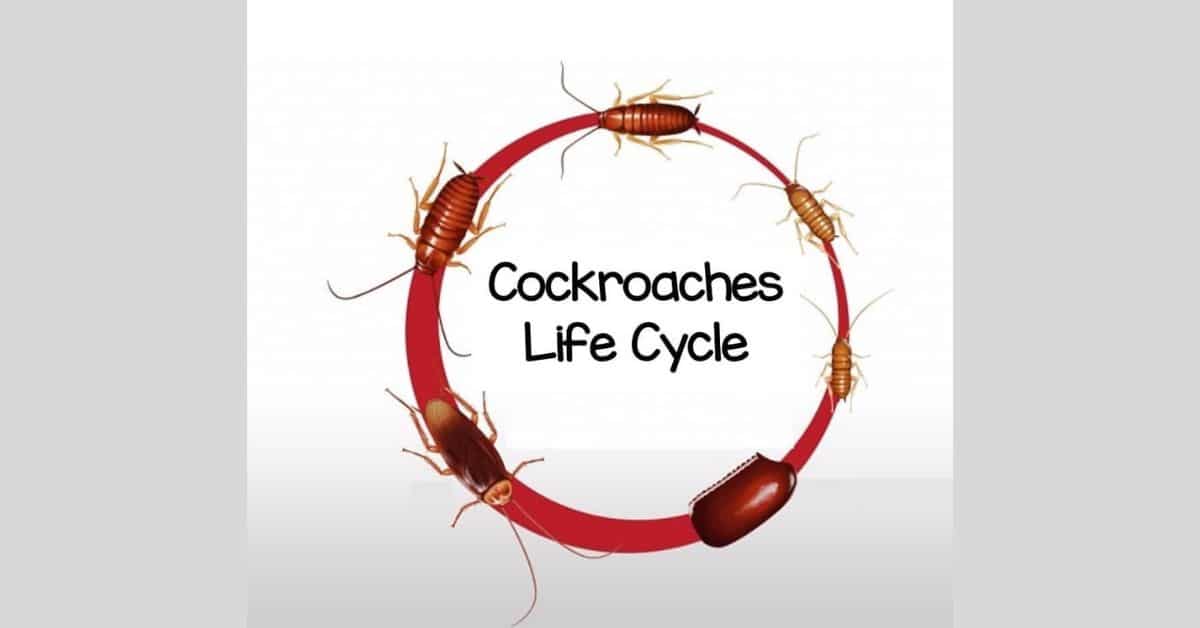Cockroach Life Cycle – Metamorphosis of Intriguing Insects
The moment you spot a cockroach in your house, you should take immediate action to eradicate the pest. Learning about the cockroach life cycle is the best way to decide what to do. A cockroach goes through three phases of growth over the course of its lifetime: the egg, nymph, and mature stages.
Every cockroach starts as an embryo, transported in a capsule called an ootheca. As they grow into adulthood, cockroaches go through various developmental phases known as instars. This article will go over the cockroach life cycle in great detail.
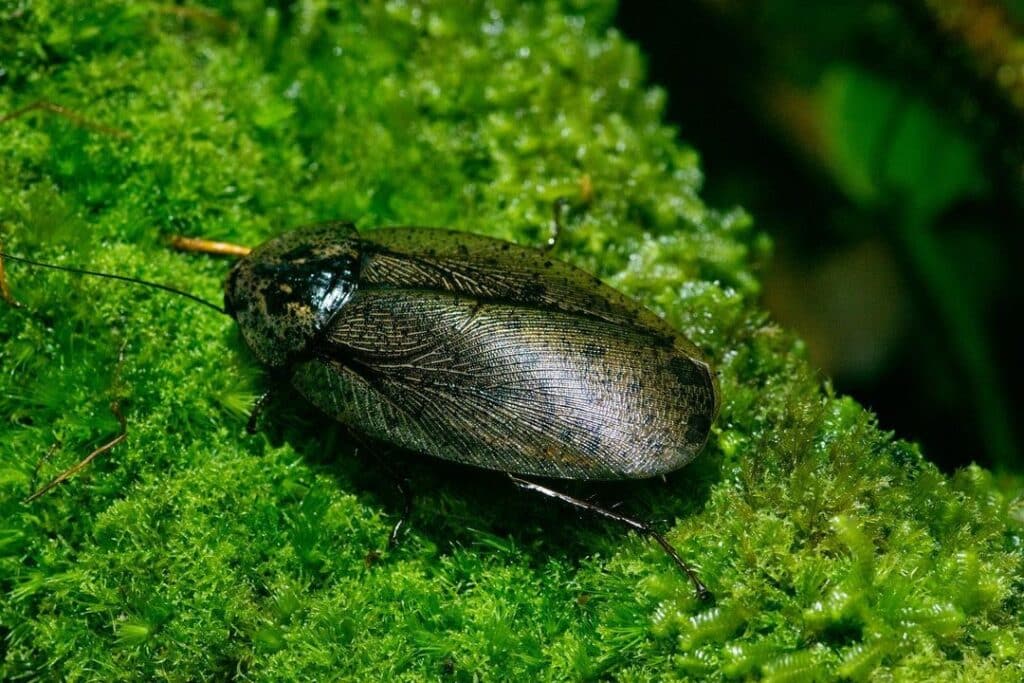
Stages of Cockroach Life Cycle
Egg Stage
The female American cockroach produces an oothecae, or egg container, three to seven days after coupling. They can deposit anywhere between 10 and 55 eggs at once. Six to fourteen oothecae are produced in a female adult’s lifetime.
Most cockroaches are oviparous, which means that the embryos grow externally to the mother rather than internally. The female places the egg case in a secret location after bearing it on the tip of her abdomen for several days or several hours. Through the secretions of the female, it sticks to the surface of its new home.
Cockroaches build nests and deposit their eggs in warm, damp, and confined areas that promote a secure and healthy environment in order to safeguard their young. The time it takes for the embryos to hatch varies based on the breed, but it usually takes one to two months.
Cockroaches can be challenging to manage because of their propensity for frequent reproduction. Depending on the breed, a female can generate hundreds or even thousands of young each year by laying eggs several times a year. Early detection and prompt removal of cockroach populations are essential to stopping their growth.
The sticky saliva of the cockroach may be found on the ceilings, walls, and furnishings glued to stoves, basins, and appliances in restrooms, storerooms, and kitchens. Cockroaches hatch in one to two months, but the egg stage can last anywhere between 14 and 100 days, based on the breed and environment.
Infestations spread quickly because most females produce numerous egg cases throughout their lives. One German cockroach, for instance, can lay over 300 offspring per year.
Nymph Stage
When the egg hatches, the Nymph stage of the cockroach life cycle begins. A cockroach will go through instars or moltings during this period in order to develop and become larger. Baby cockroaches are initially white before gradually taking on their usual brown hue as they molt and develop.
Immature bugs have soft, white bodies that harden and change to brown, tawny, or gray as they rise from their old casings. With their final molt, they will reach their complete adult height and pigmentation.
Female cockroaches may be visible during the nymph stage of the cockroach life cycle. Depending on the breed, some will hide away from the nest and forsake their young, while others will take care of their offspring throughout the nymph period. It can take a nymph between a few months and almost a year to mature.
The emergence of cockroach nymphs, or juvenile cockroaches, takes 24 to 38 days in ideal circumstances and temperatures. Nymphs go through a transformation as they mature. They lose their carapace; they accomplish this. This will take place ten to thirteen times before they are mature roaches. They gradually start to resemble adults with each metamorphosis.
It is obvious that there is a pest problem when you see the insects’ abandoned casings near homes, eateries, or food shops. Young cockroaches can cause property harm and contaminate food with germs as soon as they hatch, just like mature roaches can.
Adult Stage
A cockroach will become an adult, capable of reproductive activity, after its final molting stage of the cockroach life cycle. With three pairs of legs, two pairs of wings, and a lengthy set of appendages on the front of their heads, the typical mature cockroach measures between 1-1/2 and 3 inches in length.
Even though many cockroach species have wings, most cannot fly. To escape predators, they will, however, move rapidly from one location to another, moving up to two or three kilometers per hour. In order to start the reproduction process, females will start wooing and attracting men as adults.
The adult stage takes anywhere from six months to more than a year. For example, the average lifespan of an American cockroach is one year. After their last metamorphosis, nymphs transition into the adult form and reproduce to restart the cockroach life cycle.
At this stage, control is essential because cockroaches have a long lifetime and can infest structures in large numbers.
Different Types of Cockroach
German Cockroach Life Cycle
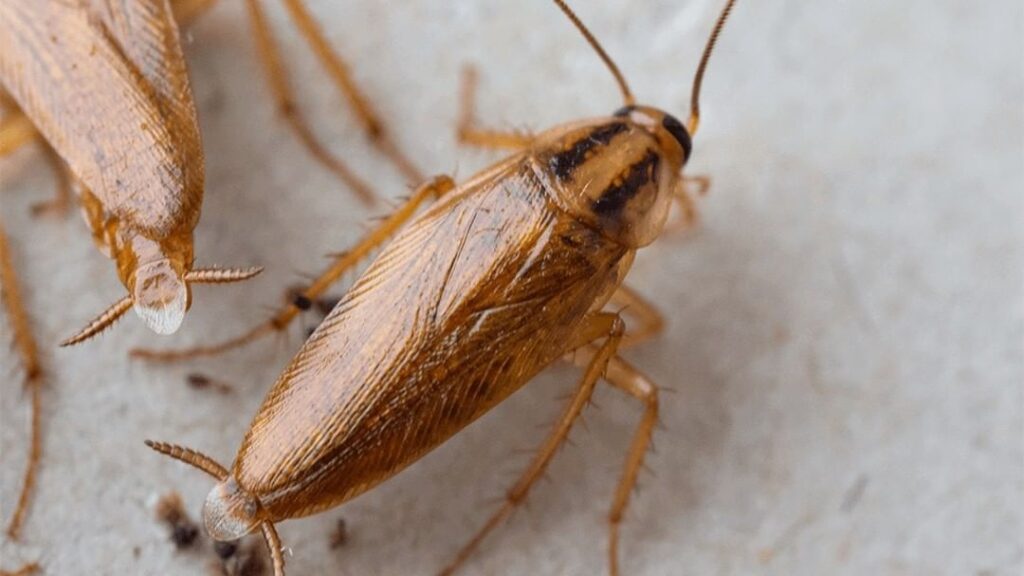
German cockroaches reproduce at the fastest pace. A female German cockroach will likely give birth to four or five oothecae during her lifetime and deposit between 20 and 40 eggs, with an average gestation rate of 28 days. That is roughly 200 babies. Before reaching the adulthood stage of the cockroach life cycle, German cockroaches go through six to seven instars. The length of this growth phase is typically 103 days. Both males and females usually live less than 200 days as adults on average.
American Cockroach
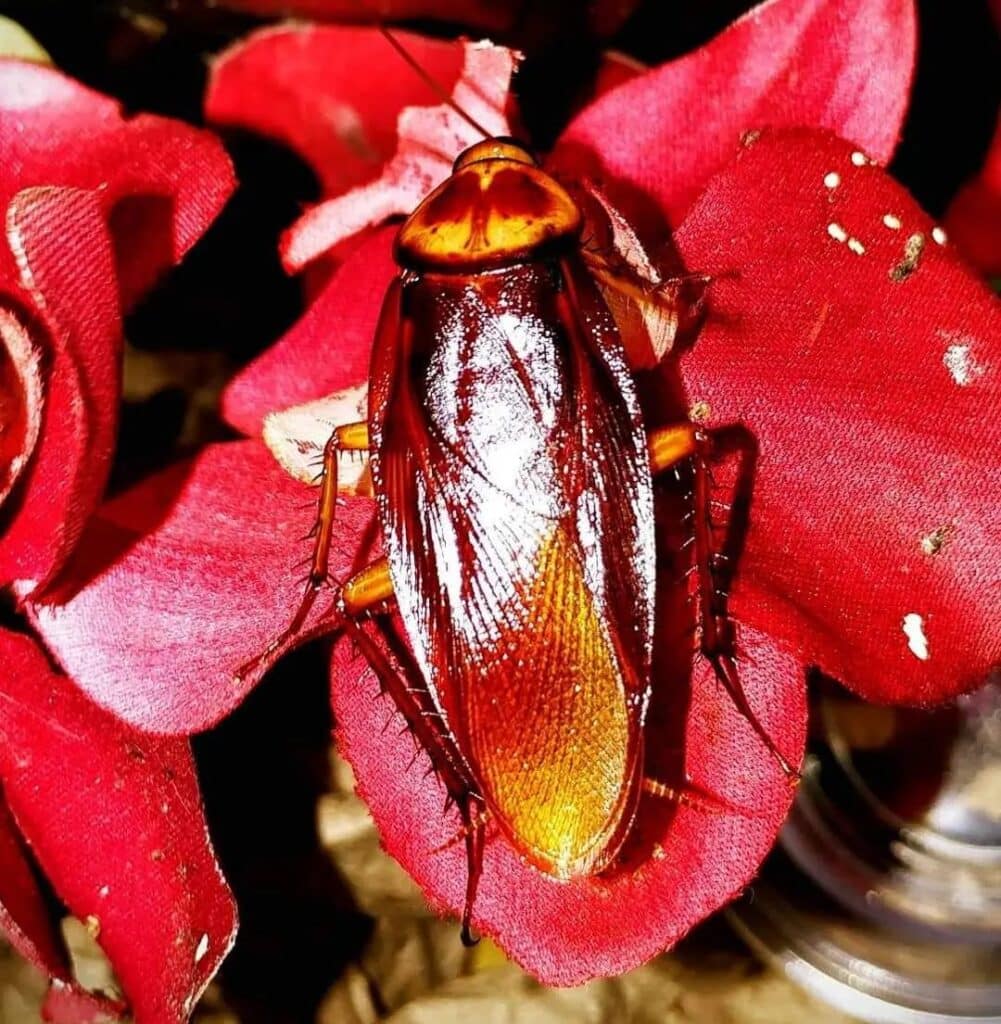
The American cockroach is the biggest insect that invades homes. A female American roach typically produces six to fourteen oothecae over the course of the cockroach life cycle, with an average incubation interval of 44 days. The mother lays about 16 eggs at a time. Up to 224 babies are the result of that. Prior to reaching adulthood, American cockroaches go through 10 to 13 instars, which takes an average of 600 days. Mature males have a maximum life expectancy of 362 days, compared to adult females’ 700+ day lifespans.
Oriental Cockroaches
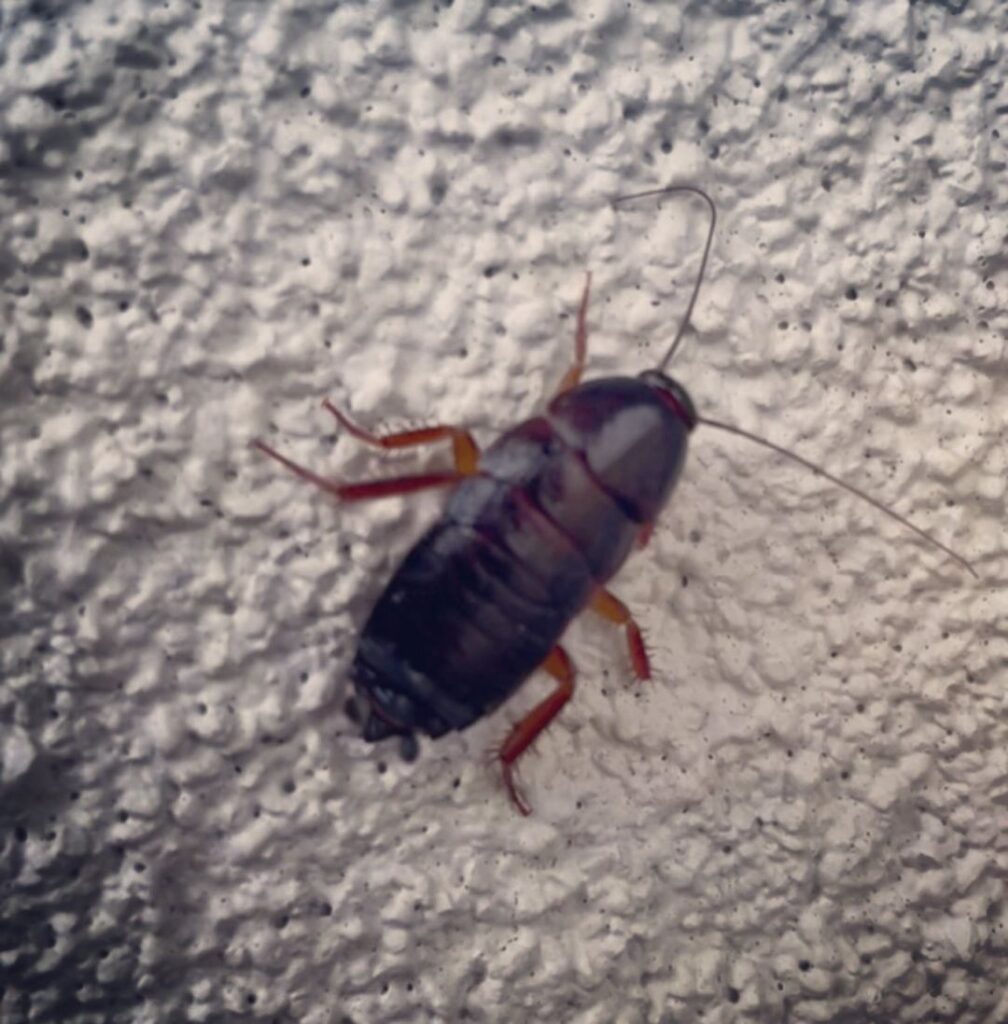
Oriental cockroaches thrive in cooler climes and prefer to reside in areas with average annual temperatures of 68 to 84 degrees Fahrenheit. However, when the temperature drops below 59 degrees Fahrenheit, they are unable to make eggshells, and as a result, it affects the cockroach life cycle.
An Oriental cockroach female will lay about 16 eggs at a time and generate eight oothecae over the course of her lifetime, with a typical incubation period of 60 days. It takes an Oriental cockroach about 589 days to grow through seven to ten instars. Males typically live to be about 160 days old, while females typically live to be about 180 days old.
How Long Do Cockroaches Live?
On average, the cockroach life cycle lasts for 1 or 2 years. However, some varieties can live up to ten years. The climate, nutrition, and other factors all affect how long cockroaches live. Favorable circumstances result in fast population development, whereas unfavorable circumstances result in adult cockroaches developing more slowly or dying before their time.
It’s interesting to note that roaches do contain microbes that help them survive. They have microorganisms in their systems that they surprisingly acquired from their parents. These microbes are consumed by the cockroach, providing it with the minerals and amino acids it needs to survive.
As a result, cockroaches are never truly concerned with what they eat. They don’t even need to search for foods that are high in nutrients. They are able to consume almost anything while still getting the nutrition they need to flourish.
Additionally, studies on speckled cockroaches have discovered a connection between bodily size and longevity. These results indicate that in this species, body size and aging are strongly correlated and that a bigger size is advantageous for life.
Prevention of Cockroaches
After exploring the cockroach life cycle, it is essential to also discuss how to avoid those “scary” insects. Making your house uninviting to roaches is the first step in getting rid of them once and for all. You are unlikely to experience an infestation if you do not provide roaches with a suitable residence. Here is what you can do in order to keep the cockroaches away from your home.
- Keep the house tidy. Cockroaches love the kitchen because they can eat scraps and extra food that are left on the counters or in the cupboard.
- Garbage cans may draw bugs seeking shelter and food for the winter. Bins must be cleaned frequently, and have an air-tight cover.
- Cockroaches are attracted to dripping pipelines and leaky taps. The best method to keep pests at bay is to keep everything dry and spotless. Make sure none of the toilets, bathtubs, or laundry spaces are leaking by inspecting them all.
- Using natural remedies to keep these pests at bay is another method to fend off cockroaches. Cockroaches can be successfully repelled by the use of essential scents like peppermint, cedarwood, and cypress.
Bottom Line
In this article, we discussed and explored the cockroach life cycle. Cockroaches are among the oldest living creatures in the world. It is thought that they have been around for 200 million years. Some scientists think they have been around for 350 million years. They have managed to survive because of their robust carapace, propensity for frequent and mass reproduction, and survival skills.

Nato is a content writer and researcher with a background in psychology who’s eager to explore the wonders of nature. As a travel enthusiast and animal lover, she hopes to inspire others to discover and cherish the beauty and importance of the natural world.

